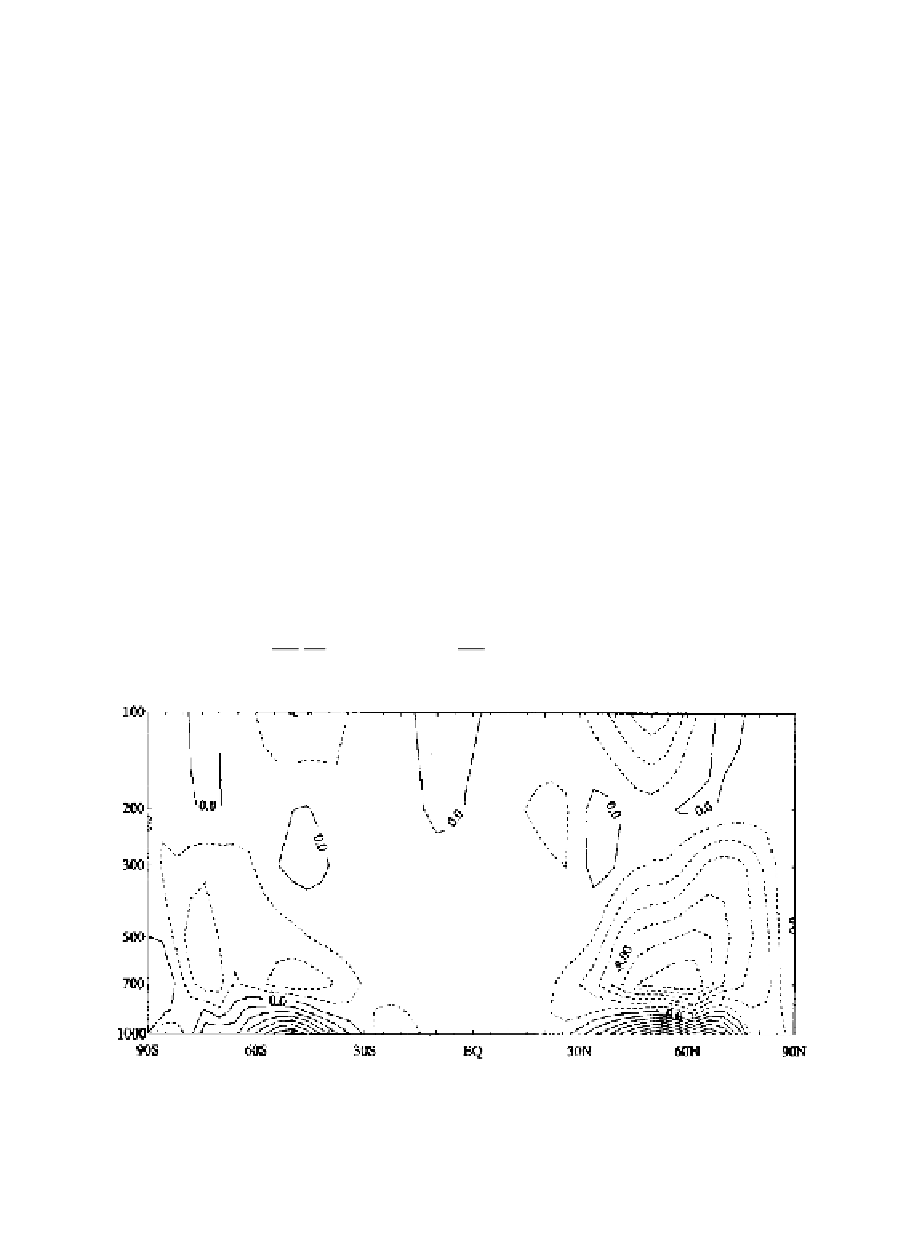Geography Reference
In-Depth Information
the combination given by the divergence of the EP flux. The fundamental role
of the eddies is thus to exert a zonal force. This eddy forcing of the zonal-mean
flow can be displayed conveniently by mapping the field of
F
and contouring the
isolines of its divergence. When properly scaled by the basic state density, these
contours give the zonal force per unit mass exerted by quasi-geostrophic eddies.
The mean global EP flux divergence pattern for a Northern Hemisphere winter is
shown in Fig. 10.8. Note that in most of the extratropical troposphere the EP flux
is convergent so that the eddies exert a westward zonal force on the atmosphere.
On the seasonal time scale the zonal force due to the EP flux divergence in (10.17)
is nearly balanced by the eastward Coriolis force of the residual mean meridional
circulation. Conditions for this balance are discussed in the next subsection.
The structure of the residual mean meridional circulation can be determined by
defining a residual stream function
v
T
N
2
It can then be shown by direct substitution into (10.14) and (10.15) that
R
H
χ
∗
≡
χ
+
ρ
0
∂χ
∗
∂z
;
∂χ
∗
∂y
ρ
0
v
∗
=−
ρ
0
w
∗
=
and
∂
∂y
κJ
H
1
ρ
0
f
0
N
2
∂
2
χ
∗
∂y
2
∂χ
∗
∂z
∂
∂z
ρ
0
N
2
∂G
∂z
+
ρ
0
=
+
f
0
(10.21)
Fig. 10.8
Eliassen-Palm flux divergence divided by the standard density ρ
0
for Northern Hemisphere
winter, based on the data of Schubert et al. (1990). (Units: m s
−
1
day
−
1
.)










